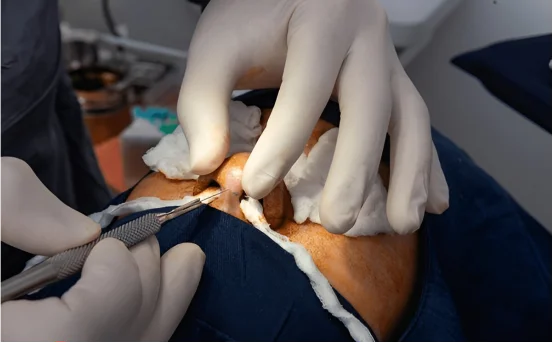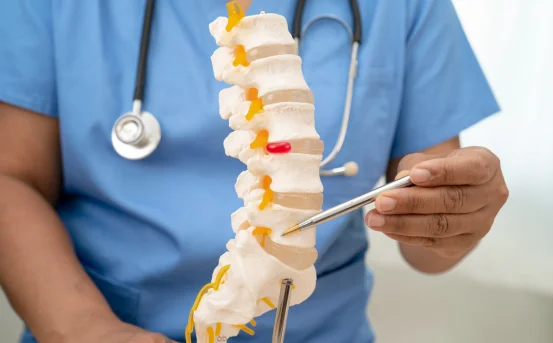Endoscopic Endonasal Surgery (EES) is a revolutionary minimally-invasive surgical technique utilized to treat a wide variety of ailments that affect the sinuses, skull base and the brain. Through the use of high-definition cameras and specially designed instruments that are inserted through the nasal passage, surgeons are able to now access the more complex parts of the skull and brain base without having to make external cuts. This technique includes various types of endoscopic endonasal surgery.
Because of its precision as well as its speed of recovery and a lower chance of complications Endoscopic Endonasal Surgery is becoming the most popular option for surgeons and patients all over the world.
Why Is Endoscopic Endonasal Surgery Performed?
Endoscopic Endonasal Surgery is typically utilized to treat tumors, lesions, or any other anomalies that may be found in the base of the skull in the nasal sinuses, nasal cavity and even the parts of the brain or pituitary gland. This allows surgeons to treat serious ailments without causing significant disruption to surrounding tissues, which results in more rapid recovery and less postoperative problems.
This overview highlights the types of endoscopic endonasal surgery available to patients.
Key Benefits:
- Minimally invasive: There are no visible cuts on the scalp or face.
- Hospital stays are reduced and recovery time is significantly improved after procedures involving types of endoscopic endonasal surgery.
Risk of infection is lower and scarring
- Access to tumors that are deep-seated is improved.
- A better surgeon’s view is enhanced by using HD endoscopic imaging
Conditions that can be treated this way can include:
- Pituitary tumors
- Skull-based tumors
- Meningiomas
- Craniopharyngiomas
- CSF (Cerebrospinal Fluid) leaks
- Infections, sinus tumors and infections
- Blockages and nasal polyps
Different Types of Endoscopic Endonasal Surgery: An Overview
This article will provide a more detailed look at the major kinds of Endoscopic Surgeries that are classified according to the region of focus and their medical use.
- Endoscopic Pituitary Surgery (Transsphenoidal Surgery)
A very well-known kinds, this procedure is performed to eliminate pituitary tumors that are located in the sinuses behind your nasal. Small cameras and instruments are placed through the nostrils to gain access to the sphenoid nasal sinus, where the pituitary gland may be located.
Common Conditions:
- Adenomas of the pituitary
- Hormone-secreting tumors
- Cushing’s disease
- Acromegaly
Endoscopic Skull Base Surgery
This cutting-edge surgical procedure is aimed at tumors and other growths that occur in the skull’s base like chordomas, meningiomas and craniopharyngiomas. The skull’s base is a delicate and intricate area and EES can provide a safer and more precise approach, with no need to perform huge craniotomies.
- Common Targets:
- Brain tumors are found near the optic nerves
- The sinuses are invaded by tumors. the nasal cavities
- Congenital abnormalities and cysts
Endoscopic Sinus Surgery (FESS – Functional Endoscopic Sinus Surgery)
It is used to treat chronic sinusitis as well as sinus obstruction FESS assists in clearing sinuses blocked by obstruction, improving the flow of air, and also helping to restore the natural drainage. It’s extremely effective for patients with nasal polyps or fungal infection or chronic sinus infections.
Benefits:
- Improved breathing
- Relief from pressure and facial pain
- A better management of allergies or infections
Endoscopic Cerebrospinal Fluid (CSF) Leak Repair
CSF leaks could lead to serious complications such as meningitis or infection. Endoscopic surgery is a procedure used to identify and close leaks, usually by using grafts derived from the patient’s own tissues.
Causes of CSF Leak:
- Trauma
- Prior surgery
- Leaks that happen spontaneously
- Side-effects of removal of tumors
5. Endoscopic Tumor Resection (Sinonasal or Nasopharyngeal)
To treat tumors that are located in the nasal cavities, nasopharynx, and paranasal sinuses EES provides a less painful method of removing tumors. Malignant or benign tumors, such as inverted papillomas or esthesioneuroblastomas, can be effectively treated using this technique.
Outcome:
- Maximal removal of tumors
- The preservation of healthy tissue that is close by
- Reduction of facial disfigurement
Endoscopic Optic Nerve Decompression
In the event of compression of the optic nerve because of tumors, trauma and inflammation. This procedure reduces pressure and aids in maintaining vision. The procedure is usually performed in conjunction with ophthalmologists and neurosurgeons.
7. Endoscopic Orbital Decompression
It is usually performed for patients suffering from thyroid eye disease (Graves orbitopathy) or tumors that cause proptosis (bulging eyes). In the nose, surgeons are able to get to and decompress the socket of your eyes (orbit) which improves eyesight and function.
What to Expect: Pre-op and Post-op
Before Surgery
- A comprehensive image (MRI as well as CT scan) is performed to help determine the best way to proceed with surgery.
- Eye exams, blood tests and hormone panels could be necessary
- Patients should stop taking certain medicines prior to surgery.
After Surgery
- The hospital stay is usually between 1-3 days
- Nasal congestion is common, but is relieved after a week
- Do not engage in strenuous activities for a couple of weeks
- Checking the results of follow-up imaging after surgery to ensure success
- Regularly monitor hormone levels (especially following pituitary surge
Risks & Considerations
Like any surgical procedure, Endoscopic Endonasal Surgery carries certain risks. But, when compared to open surgeries that are traditional the risk of complications is substantially less. However, patients must be aware of dangers, such as:
- CSF leakage
- Infection
- Vision shifts
- Nasal bleeding or crusting
- Hormonal imbalances (particularly in the pituitary surgical procedure)
A skilled and knowledgeable ENT as well as neurosurgical staff decreases the risk of developing complications.
Conclusion
Endoscopic Endonasal Surgery represents the future of minimally invasive skull base and head treatments. It is precise, has a shorter time to recover, and a lower risk It has revolutionized the way we deal with critical issues such as pituitary tumours CSF leaks, as well as skull cancers.
No matter if you’re struggling with chronic sinus problems or a complex brain tumor EES is a new treatment with less risk and effective. If you or your loved one are suitable for this kind procedure, you should consult a doctor who has been trained in advanced techniques for neurosurgical and nasal endoscopy to consider the options.






















